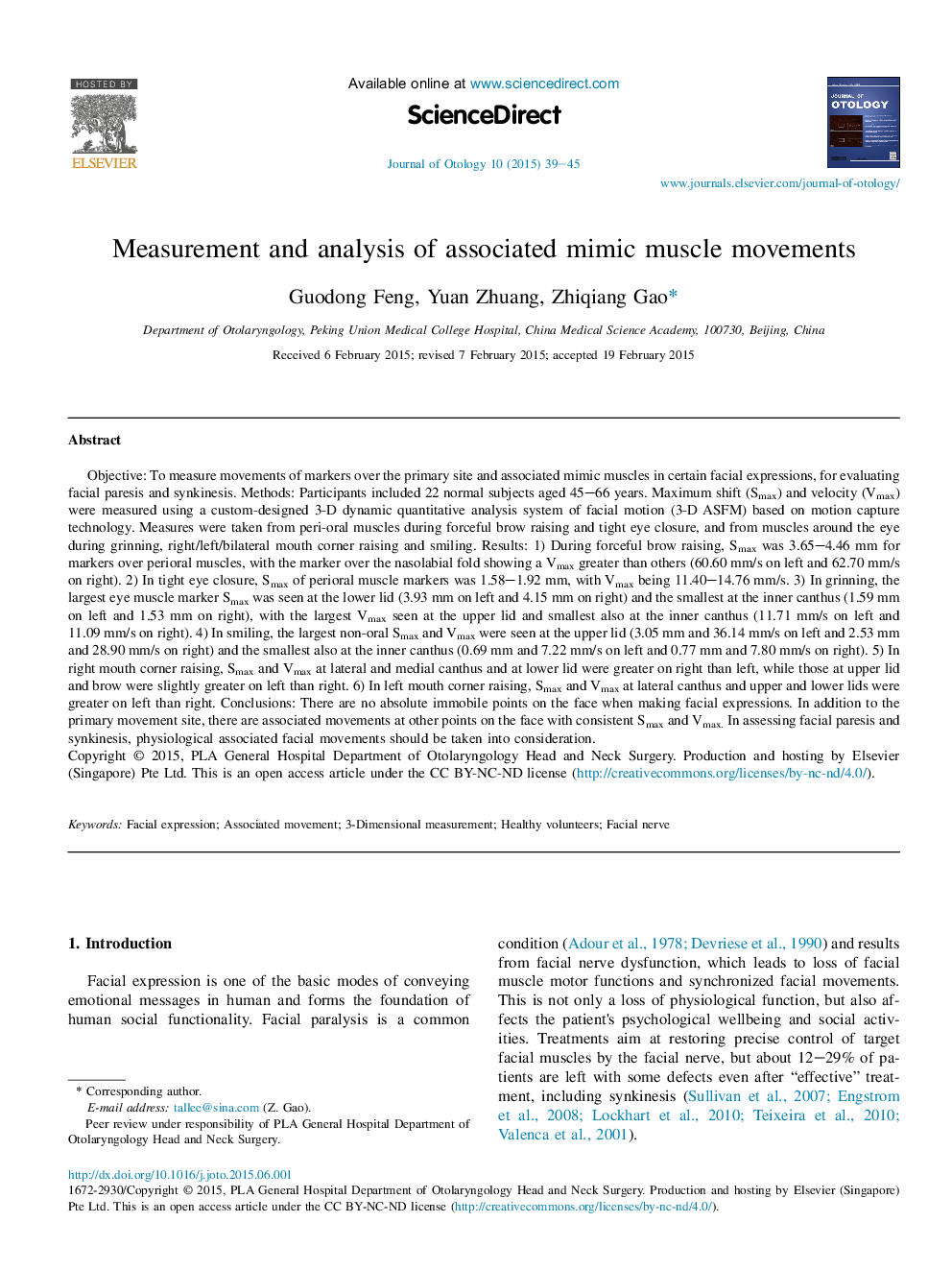| کد مقاله | کد نشریه | سال انتشار | مقاله انگلیسی | نسخه تمام متن |
|---|---|---|---|---|
| 4116649 | 1270266 | 2015 | 7 صفحه PDF | دانلود رایگان |
Objective: To measure movements of markers over the primary site and associated mimic muscles in certain facial expressions, for evaluating facial paresis and synkinesis. Methods: Participants included 22 normal subjects aged 45–66 years. Maximum shift (Smax) and velocity (Vmax) were measured using a custom-designed 3-D dynamic quantitative analysis system of facial motion (3-D ASFM) based on motion capture technology. Measures were taken from peri-oral muscles during forceful brow raising and tight eye closure, and from muscles around the eye during grinning, right/left/bilateral mouth corner raising and smiling. Results: 1) During forceful brow raising, Smax was 3.65–4.46 mm for markers over perioral muscles, with the marker over the nasolabial fold showing a Vmax greater than others (60.60 mm/s on left and 62.70 mm/s on right). 2) In tight eye closure, Smax of perioral muscle markers was 1.58–1.92 mm, with Vmax being 11.40–14.76 mm/s. 3) In grinning, the largest eye muscle marker Smax was seen at the lower lid (3.93 mm on left and 4.15 mm on right) and the smallest at the inner canthus (1.59 mm on left and 1.53 mm on right), with the largest Vmax seen at the upper lid and smallest also at the inner canthus (11.71 mm/s on left and 11.09 mm/s on right). 4) In smiling, the largest non-oral Smax and Vmax were seen at the upper lid (3.05 mm and 36.14 mm/s on left and 2.53 mm and 28.90 mm/s on right) and the smallest also at the inner canthus (0.69 mm and 7.22 mm/s on left and 0.77 mm and 7.80 mm/s on right). 5) In right mouth corner raising, Smax and Vmax at lateral and medial canthus and at lower lid were greater on right than left, while those at upper lid and brow were slightly greater on left than right. 6) In left mouth corner raising, Smax and Vmax at lateral canthus and upper and lower lids were greater on left than right. Conclusions: There are no absolute immobile points on the face when making facial expressions. In addition to the primary movement site, there are associated movements at other points on the face with consistent Smax and Vmax. In assessing facial paresis and synkinesis, physiological associated facial movements should be taken into consideration.
Journal: Journal of Otology - Volume 10, Issue 1, March 2015, Pages 39–45
